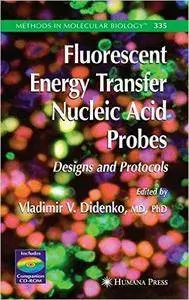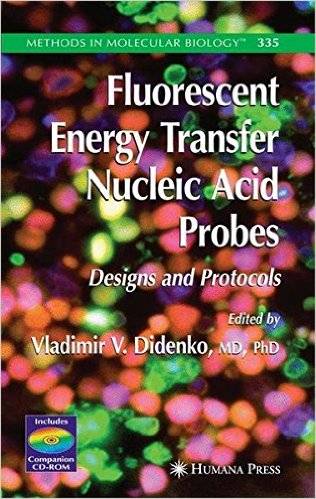Vladimir V. Didenko, "Fluorescent Energy Transfer Nucleic Acid Probes: Designs and Protocols"
2006 | ISBN-10: 1588293807 | 372 pages | PDF | 10 MB
2006 | ISBN-10: 1588293807 | 372 pages | PDF | 10 MB
Fluorescent nucleic acid probes, which use energy transfer, include such constructs as molecular beacons, molecular break lights, Scorpion primers, TaqMan probes, and others. These probes signal detection of their targets by changing either the intensity or the color of their fluorescence. Not surpr- ingly, these luminous, multicolored probes carry more flashy names than their counterparts in the other fields of molecular biology. In recent years, fluor- cent probes and assays, which make use of energy transfer, have multiplied at a high rate and have found numerous applications. However, in spite of this explosive growth in the field, there are no manuals summarizing different p- tocols and fluorescent probe designs. In view of this, the main objective of Fluorescent Energy Transfer Nucleic Acid Probes: Designs and Protocols is to provide such a collection. Oligonucleotides with one or several chromophore tags can form fluor- cent probes capable of energy transfer. Energy transport within the probe can occur via the resonance energy transfer mechanism, also called Förster tra- fer, or by non-Förster transfer mechanisms. Although the probes using Förster transfer were developed and used first, the later non-Förster-based probes, such as molecular beacons, now represent an attractive and widely used option. The term “fluorescent energy transfer probes” in the title of this book covers both Förster-based fluorescence resonance energy transfer (FRET) probes and probes using non-FRET mechanisms. Energy transfer probes serve as molecule-size sensors, changing their fluorescence upon detection of various DNA reactions.



